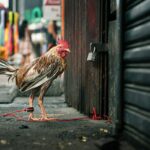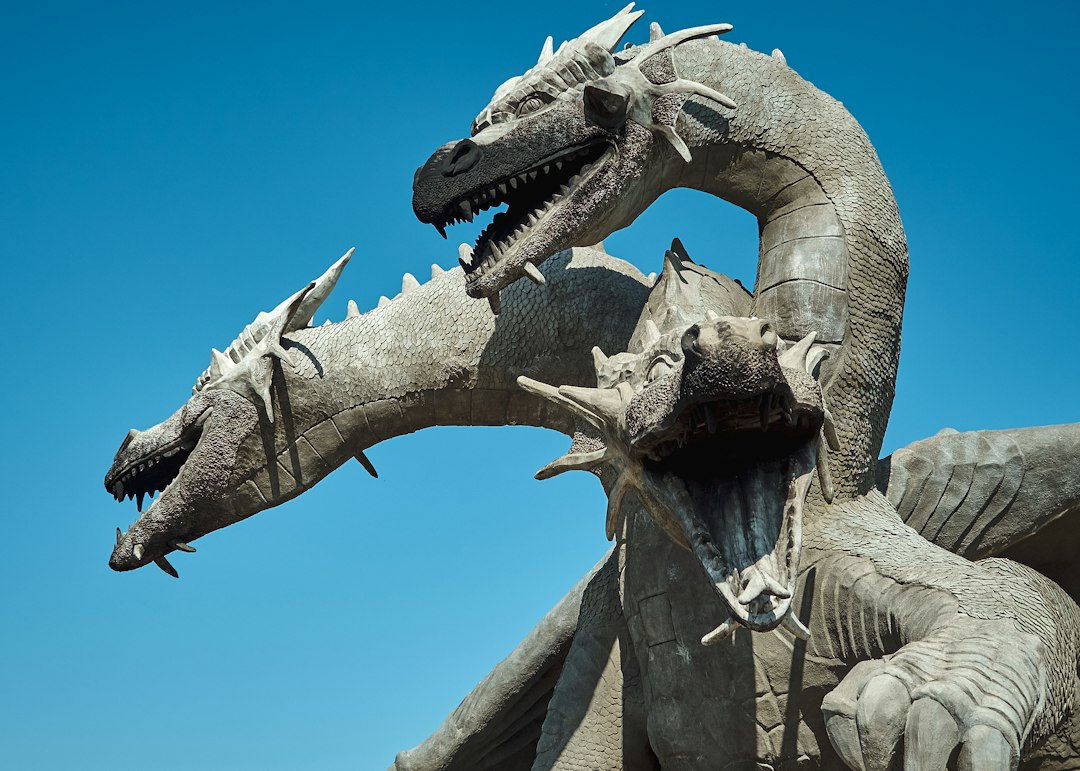The Wendigo is a creature of legend that originates from the folklore of the Algonquin people, who are indigenous to the northeastern United States and eastern Canada. It is a fearsome and monstrous creature that has captivated the imaginations of people for centuries. The Wendigo is an important figure in Algonquin mythology, representing fear, hunger, and the struggle for survival.
Key Takeaways
- The Wendigo is a mythical creature from Algonquin folklore.
- The legend of the Wendigo has historical and cultural roots.
- The Wendigo is a monstrous creature with supernatural powers and abilities.
- The Wendigo’s diet consists of human flesh and cannibalism.
- The Wendigo’s curse involves transformation and possession in Algonquin mythology.
The Origins of the Wendigo Legend: Historical and Cultural Context
The legend of the Wendigo has its roots in the historical and cultural context of the Algonquin people. The Algonquin believed that the Wendigo was a malevolent spirit that possessed individuals who engaged in cannibalism or had a strong desire for human flesh. The Wendigo was seen as a symbol of greed, excess, and the consequences of violating cultural taboos.
The Wendigo’s Appearance: A Monstrous Creature of the North
The Wendigo is often depicted as a tall, emaciated figure with sunken eyes and yellowed teeth. It has long limbs and sharp claws, which it uses to hunt and capture its prey. Its skin is said to be pale and stretched tightly over its bones, giving it a gaunt and skeletal appearance. In some depictions, the Wendigo is portrayed as having antlers or horns on its head, further emphasizing its otherworldly nature.
The Wendigo’s Powers and Abilities: Fearful Traits of a Supernatural Beast
| The Wendigo’s Powers and Abilities | Description |
|---|---|
| Supernatural Strength | The Wendigo possesses immense physical strength, capable of overpowering humans and animals with ease. |
| Regeneration | The Wendigo can heal from injuries at an accelerated rate, making it difficult to kill. |
| Enhanced Senses | The Wendigo has heightened senses of sight, smell, and hearing, allowing it to track prey from great distances. |
| Shape-Shifting | The Wendigo can transform into any animal or human form, making it difficult to identify and track. |
| Telepathy | The Wendigo can communicate telepathically with humans and animals, often using this ability to lure them into traps. |
| Fear Inducement | The Wendigo can instill intense fear in its prey, causing them to freeze or flee, making them easier to catch. |
| Immortality | The Wendigo is immortal and does not age, making it a formidable opponent. |
The Wendigo is believed to possess supernatural powers and abilities. It is said to have enhanced strength, speed, and agility, making it a formidable predator. It can also mimic human voices to lure unsuspecting victims into its grasp. Additionally, the Wendigo is said to have the ability to control the weather and create blizzards or storms.
The Wendigo’s Diet: Cannibalism and the Hunger for Human Flesh
One of the most distinctive traits of the Wendigo is its insatiable hunger for human flesh. It is believed that those who consume human flesh or have a strong desire for it can become possessed by the Wendigo spirit. This association with cannibalism serves as a cautionary tale and reinforces the cultural taboo against such practices.
The Wendigo’s Curse: Transformation and Possession in Algonquin Mythology

According to Algonquin mythology, those who are possessed by the Wendigo spirit undergo a terrifying transformation. They become consumed by an insatiable hunger for human flesh and lose all sense of their former selves. The Wendigo curse is seen as a punishment for violating cultural norms and serves as a warning against the dangers of greed and excess.
The Wendigo in Popular Culture: Depictions in Film, Literature, and Art
The Wendigo has made its way into popular culture through various forms of media, including film, literature, and art. It has been portrayed as a terrifying monster in horror movies and novels, often serving as the main antagonist. Its appearance and powers have been reimagined and adapted to fit different narratives, but its core symbolism of fear and terror remains intact.
Wendigo Sightings and Encounters: Real-Life Stories of the Beast in the Wilderness
There have been numerous reported sightings and encounters with the Wendigo in the wilderness, particularly in areas where the Algonquin people once lived. These stories often involve individuals claiming to have seen a tall, gaunt figure lurking in the woods or hearing strange voices calling out to them. While these accounts are often dismissed as folklore or urban legends, they hold cultural significance for those who believe in the existence of the Wendigo.
The Wendigo’s Legacy: Impact on Indigenous Communities and Contemporary Society
The Wendigo holds a significant place in the mythology and cultural traditions of Indigenous communities, particularly the Algonquin people. It serves as a symbol of cultural resilience and survival, reminding people of the importance of respecting cultural taboos and maintaining a balance with the natural world. In contemporary society, the Wendigo continues to be a powerful symbol of fear and terror, representing the darker aspects of human nature.
The Wendigo as a Symbol of Fear, Survival, and Cultural Resilience
In conclusion, the Wendigo is a mythical creature that has captivated the imaginations of people for centuries. It is an important figure in Algonquin folklore, representing fear, hunger, and the struggle for survival. The Wendigo’s appearance, powers, and association with cannibalism make it a terrifying and formidable creature. Its legacy continues to impact Indigenous communities and contemporary society, serving as a symbol of fear, survival, and cultural resilience.
FAQs
What is the Wendigo?
The Wendigo is a creature from Algonquin mythology that is said to be a malevolent spirit associated with winter, coldness, and famine.
What does the Wendigo look like?
The appearance of the Wendigo varies depending on the tribe and region, but it is generally described as a tall, emaciated, and skeletal humanoid with glowing eyes, long claws, and sometimes antlers or horns.
What is the origin of the Wendigo?
The origin of the Wendigo is unclear, but it is believed to have originated from the Algonquin-speaking tribes of North America, particularly the Ojibwe, Cree, and Innu.
What is the Wendigo legend?
The Wendigo legend varies among different tribes, but it generally involves a human being who becomes possessed by the spirit of the Wendigo after resorting to cannibalism during a harsh winter or famine. The possessed person then becomes a Wendigo and preys on other humans.
Is the Wendigo real?
The Wendigo is a mythological creature and is not considered to be real by modern science.
What is the cultural significance of the Wendigo?
The Wendigo is an important figure in Algonquin mythology and is often used as a cautionary tale against greed, gluttony, and cannibalism. It also serves as a reminder of the harshness of winter and the importance of respecting nature.







